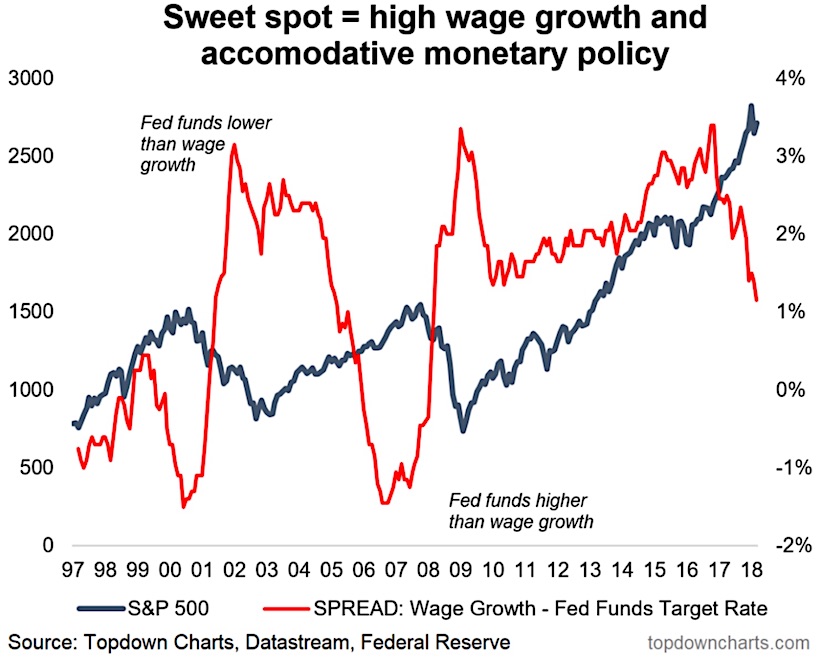One thing I am fond of is creating my own indicators, and today’s chart features one of my many favorites – the Fed Sweet Spot Indicator.
As the Fed is pressing on with monetary policy tightening, and as heightened volatility permeates the markets, it’s a great opportunity to revisit this indicator and what it is telling us about monetary policy and the market.
The chart in this article came from a broader discussion on monetary policy and markets in a recent edition of the Weekly Macro Themes.
As I mentioned, the chart shows the so-called Fed Sweet Spot Indicator vs the S&P 500.
Quite simply the indicator takes the spread between the Atlanta Fed wage growth indicator and the Fed funds target rate. Higher levels of this indicator mean the pace of wage growth is higher than the level of the fed funds rate, and negative readings mean wage growth has fallen below (and/or that the fed funds rate has been hiked beyond where wage growth is at).
You can see quite clearly that the last two major market tops saw this indicator go all the way into the negatives before kicking off a bear market – and even then, with a lag. Similarly, when the indicator rose to the highs above 3% it marked a major bottom and the start of a new bull market in 2003, 2009, and 2016.
Really all this indicator does is provide some extra context for the level of the Fed funds rate. Rising interest rates obviously cause pressure on the market for a number of reasons e.g. higher cost to service debt, more attractive yield on cash, higher discount rate in valuations, etc. But as many have pointed out, higher interest rates if accompanied by higher growth are not necessarily a deal breaker.
The current level of this indicator is materially lower than where it got to in 2016, but looking at previously cycles it likely still has a way to go before it may herald the arrival of another big bear market. So there will come a time to worry about Fed rate hikes, but arguably this indicator says not quite yet. In any case keep an eye on monetary policy (see video below), because things are steadily changing.
Twitter: @Callum_Thomas
Any opinions expressed herein are solely those of the author, and do not in any way represent the views or opinions of any other person or entity.









